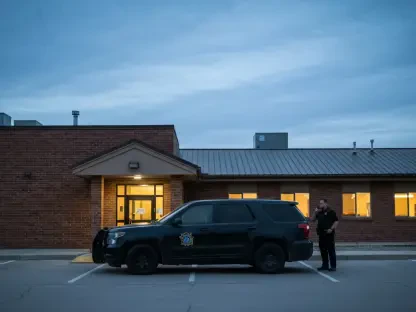A significant financial settlement of $150 million by the Roman Catholic Diocese of Buffalo aims to address long-standing grievances of childhood sexual abuse. This agreement, symbolizing one of the largest financial commitments by a religious institution in New York, resonates profoundly beyond monetary figures, delving into issues of justice, accountability, and healing.
The importance of this settlement reverberates through the lens of New York’s Child Victims Act, empowering survivors to seek justice. By allowing claims regardless of the statute of limitations, this legislation opened avenues for those who had long suffered in silence to step forward. The Diocese’s settlement responds directly to over 900 lawsuits, highlighting a pivotal moment in the movement towards institutional accountability and survivor empowerment.
Contextualizing the Historical Abuse Crisis
The news of the Buffalo Diocese’s settlement must be understood within the broader crisis of historical abuse within the Catholic Church. For decades, institutions faced severe scrutiny over allegations of sexual misconduct by clergy, shaking the very foundation of trust with communities. The Child Victims Act in New York was groundbreaking in its approach, offering a legal platform for survivors to voice claims that had previously gone unheard. Its enactment has been a vital tool in dismantling the barriers that once protected abusers and neglected victims’ rights.
Analyzing the Settlement’s Financial and Emotional Impacts
The $150 million settlement not only sets a historical precedent but also reflects intricate financial and emotional dimensions. Structured to address claims from over 900 survivors, the settlement’s allocation is subject to court approval. Its significance is underscored by the fact that it is the second-largest contribution made in any Roman Catholic institution’s bankruptcy proceedings to date. Comparative analysis with other diocesan settlements across the US paints a picture of an evolving landscape where public accountability and transparency are increasingly demanded.
Perspectives from Survivors, Legal Experts, and Church Voices
Hearing directly from those affected brings the settlement’s impact into sharper focus. Survivors and advocates have voiced mixed reactions, seeing this as a step toward justice yet yearning for deeper systemic change. Legal experts highlight the settlement’s role in the broader context of bankruptcy law, which stands as a crucial avenue for remedial action. Church representatives, on their part, acknowledge past errors and express a commitment to reform, reinforcing the necessity for dialogue and restitution.
Strategies for Healing and Institutional Change
Charting a path forward requires a concerted effort from clergy and community members to foster healing and prevention. Implementing comprehensive psychological support for survivors and establishing rigorous accountability methods are critical. Religious institutions must work diligently to restore trust through transparent practices and sincere apologies. This includes acknowledging the past, educating communities, and implementing preventive measures to ensure such transgressions do not recur.
Looking Ahead: Toward Comprehensive Change
In light of this monumental settlement, the prospects for healing are multifaceted. While financial recompense represents one facet of justice, true healing demands a pervasive cultural shift within religious entities. By prioritizing transparency and cultivating supportive environments, institutions have the opportunity to forge new paths of trust and integrity. The settlement, though significant, marks merely the beginning of a deeper commitment to transform institutional ethics and community relationships, paving the way toward genuine reconciliation and recovery.









